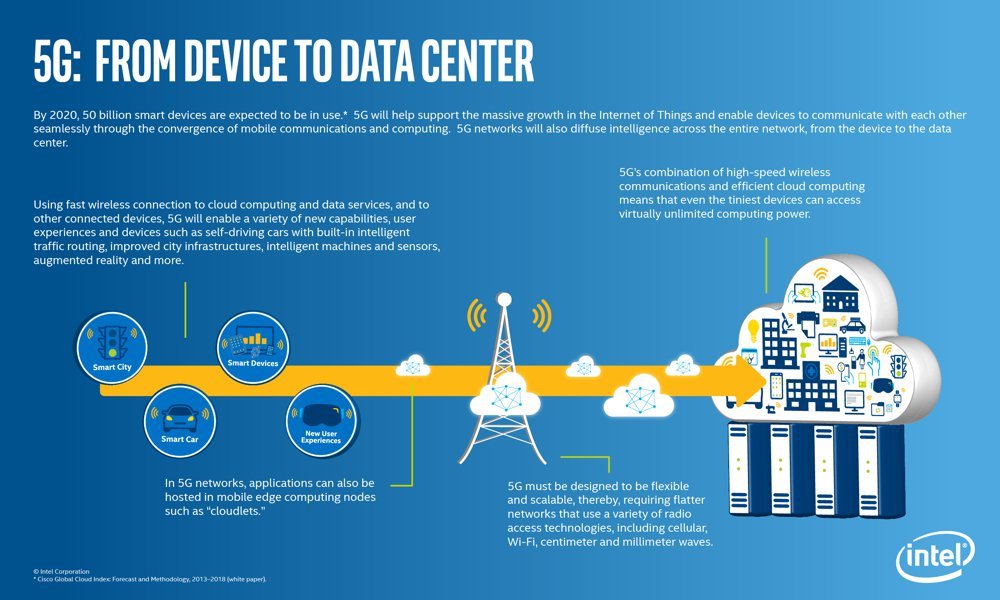
ITU & 3GPP-driven 5G has huge potential in utilizing Network Functions Virtualization (NFV) to enhance radio access and core network elements. Many operators and equipment manufacturers have already invested heavily to reap the benefits of this technology.
5G mobile network services can be classified into Enhanced Mobile Broadband (eMBB), Ultra-reliable and Low-latency Communications (uRLLC), and Massive Machine Type Communications (mMTC) categories. These services are planned to meet the requirements for high bandwidth applications, latency-sensitive services, a futuristic machine driven society, and the Internet of Things.
The service-driven 5G network architecture is thus being designed to meet diversified service requirements. Network Functions Virtualization (NFV) is the best fit to support stringent access, transport, and core networks' demands of 5G networks. It enables fast network slicing and, on-demand deployment of network nodes and service elements.
Most LTE network service providers are familiar with NFV and are either already using NFV to provide LTE Evolved Packet Core (EPC) functions in live networks or plan to do so. Operators are using NFV for capacity expansion, co-hosting with native deployments and small-scale roll-outs. With this experience, NFV is all set to be the preferred choice for 5G deployments. With NFV, service providers can re-use existing compatible hardware and new additions will be reusable as technology evolves, providing a significant return on CapEx investment over the time.
NFV offers the ability to instantiate network functions in real time within the operator’s cloud infrastructure. It promises increased automation, operational efficiency, and agility with reduced CapEx. A 5G-ready NFV core may open the doors for new business opportunities e.g. in vertical segments.
One of the key architectural changes in 3GPP's 5G network is Control and User Plane Separation of EPC nodes (CUPS) which provides the architecture enhancements for the separation of functionality in the Evolved Packet Core’s SGW, PGW and TDF. This evolution enables flexible network deployment and operation, by distributed or centralized deployment and the independent scaling between control plane and user plane functions. NFV is just right for such architectural deployments.
A growing set of services and functions would bring a many-fold increase in configuration and deployment steps. Manual steps will result in significant challenges for network deployment and operations. 5G networks must be self-serving and self-healing with agile and dynamic capabilities. NFV-based deployment architecture provides a path to achieve this. It brings greater speed and efficiency in launching new services as well as reducing lifecycle management costs.
With a virtualized network deployment framework, operators will be able to meet the growing traffic demand in near real time. Think about the peak traffic hours or, days when the network needs to be ready to handle many fold bandwidth demand increases in real-time. With an automated trending and NFV deployment framework, additional SGW and, PGW control and user plane nodes could be added as traffic grows and removed once traffic is back to normal. This opens another door for operators to use 3rd party infrastructure with a pay-per-use model for cloud deployments
5G networks not only bring new radios as named by 3GPP or CUPS but also add another change called network slicing. Virtualization is key to enable network slicing for different use cases. This change allows service providers to offer multiple services with different performance requirements. Each component or network slice provides an independent, virtualized function of the network element. With this feature, service providers can create network slices that are optimized for specific use cases. One slice could serve smartphone users, another one can serve subscribers like autonomous vehicles, While a third could handle IoT networks, and so on.
With the ongoing 5G evolution, NFV has become a key ingredient for successful rollout and service delivery for the next decade. IT service in the cloud was key for NFV popularity so far, and 5G will add to this boom for the next decade and beyond.